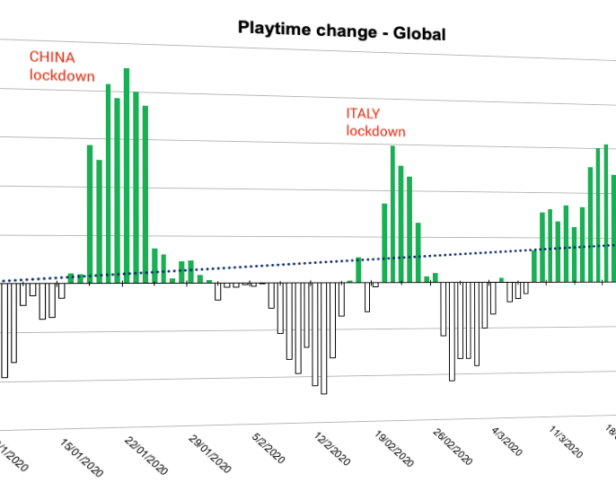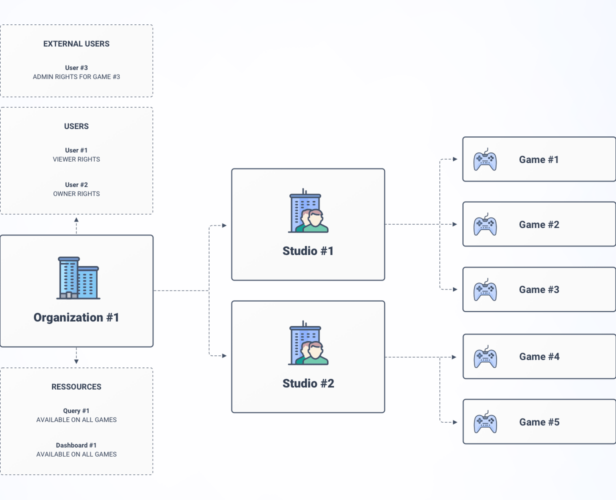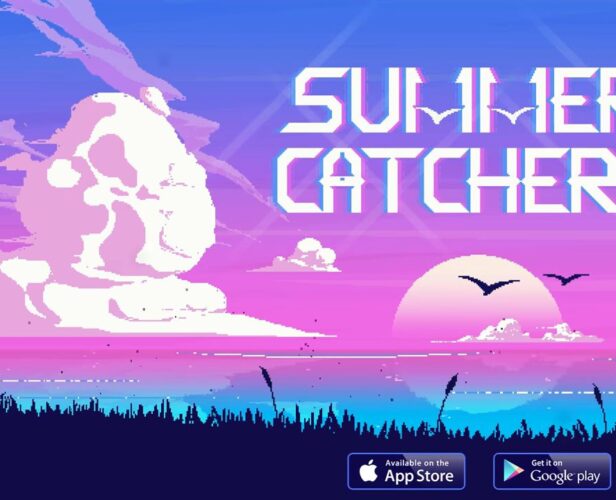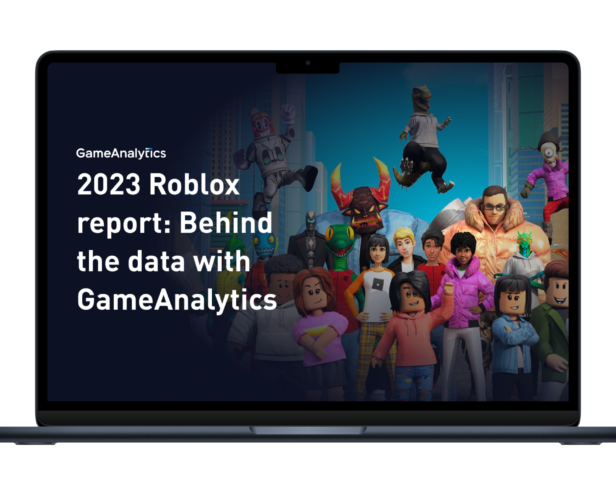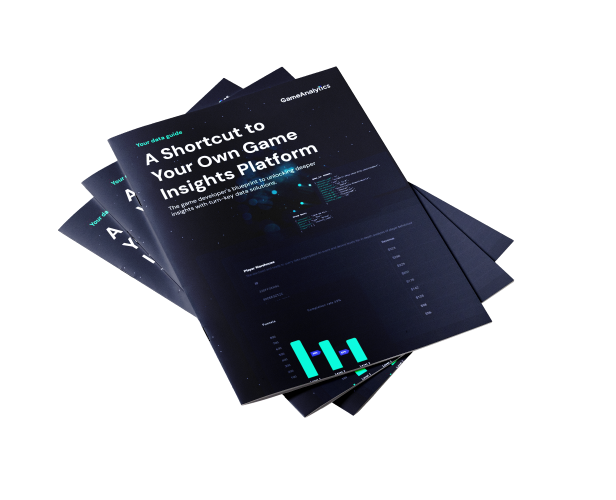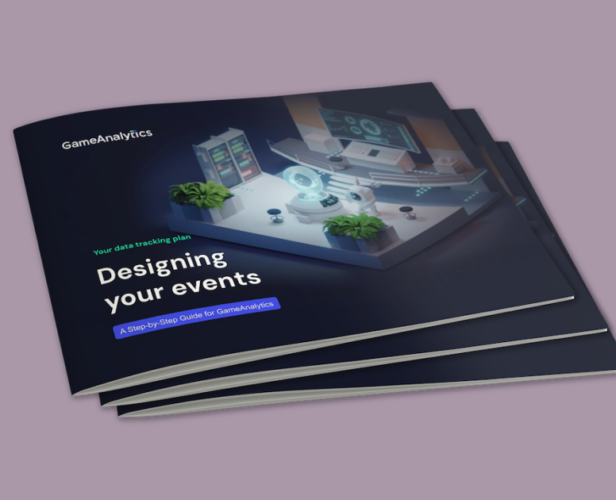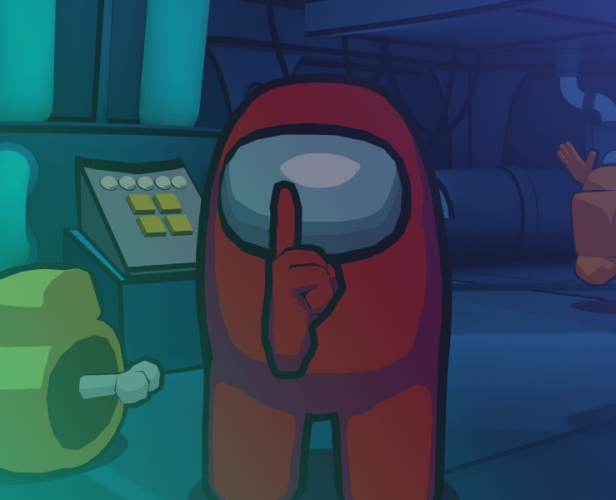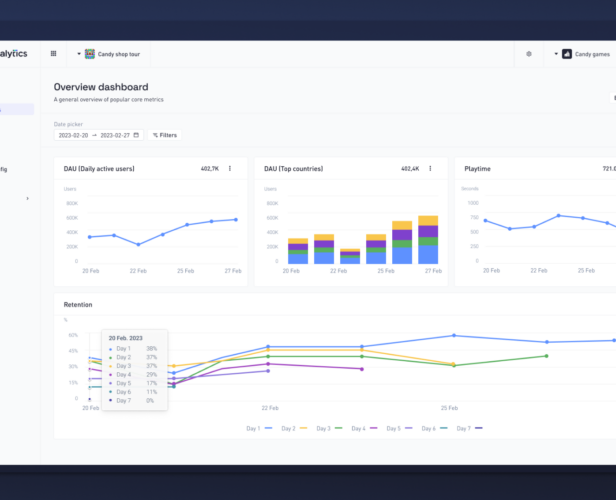Resources > All
Insights and tips about the games industry
Subscribe for gaming insights, industry reports and product updates delivered straight to your inbox.
#Game Design
How Voodoo Diversified and Lowered Game Product KPIs
Editors Notes: This article was originally published on LinkedIn by Youssef Gasmi, Communications Manager at Voodoo. Measurability of value has become a key factor in game publishing, a set of metrics that define what games get made, and which concepts are invested in. Successfully understanding the core strengths and the impact a game will have before it is released is a vital part of the development process in mobile games. This is becoming more important due to the highly competitive nature of the market in 2020. As result, what were once seen as hard and fast rules, namely 55% D1, 22% D7 retention and CPIs below $0.25 are now considered short-sighted. At Voodoo, we have become the leading publisher behind Hyper-Casual games, and we have used a robust testing methodology to establish a game’s retention, and cost per install values,...
#Tool & Product
GameAnalytics Product Update: May 2020
A lot has been going on here at GameAnalytics. We’re working on new features, products, rebranding and more. And now, we’ve made some new feature releases, a couple of which you’ve likely already heard about. But for those of you who haven’t, let’s get you up to speed with the latest changes to our platform and family of SDKs. To fill you in, we’ve listed out what we’ve improved within the GameAnalytics tool – whether big or small. I’ve kept this quite snappy and to the point, so if you have any questions or feel like we’ve missed something, feel free to get in touch. We’ll get back to you right away. So, let’s get to it. Remote Configs You can now apply Remote Configs to specific groups of players. Players can be filtered by three categories: Country, Build and...
#Data & Analytics
How to find Hyper-Casual Success with Rapid Testing and Development
Editors note: This blog was written by hyper-casual specialists, JoyPac. JoyPac specializes in publishing hit hyper-casual games across the globe, and today they have agreed to share their insights into testing and developing hyper-casual games. On Wednesday, May 13th, we’ll be hosting a JoyPac webinar all about making successful hyper-casual games using rapid testing and development. This blog is your preview for the topics we’ll be discussing and some of the advice we’ll be giving. The hyper-casual mobile genre is evolving Hyper-casual mobile games use very simple gameplay and a business model based on in-game advertising. The genre emerged as a sort of backlash or nostalgic revival a couple of years ago. But even though it’s a fairly new genre, it’s already starting to shift. This evolution seems to be branching off into two sub-genres: Ultra-casual games—pushing the simplicity of...
#Data & Analytics
Mobile playtime increases by 62%, with IAP up by around 30% in Q1
As millions of people work from home or are on furlough, they’ve needed something to pass the time: streaming TV shows, learning instruments and, of course, playing games. At least, that’s the assumption. We dug into our data to find that playtime has soared and people are spending more, but each genre is affected differently. We’ve analyzed our data in two ways 1. Global network analysis Our first approach was to look at the overall data across our network. Over 75,000 developers use GameAnalytics to analyze how gamers are playing. That’s about 40,000 active mobile games, all in all, including 40 of the top 100 most downloaded games on the app stores. By combining all this data, we can see how more than a third of the world’s mobile players are behaving. Specifically, we analyzed playtime and how much people...
#Ads & Monetization
Customizing Rewarded Ads using Machine Learning – Lessons from Rovio
A couple of months ago, we had the pleasure of attending Google’s GameCamp, which was filled to the brim with gamedev content delivered from the best and brightest in mobile gaming. While there, Elif Büyükcan, the Business Intelligence Director at Rovio Entertainment, shared with us how they’ve been using rewarded ads in their games. We’re here to report on their story, and what you can learn from them. Elif’s main message was this: “Getting your monetization model right is incredibly important. It takes a lot of time, thought and testing. You need to be constantly measuring, learning and adapting. This makes machine learning (ML) and artificial intelligence (AI) your best friends.” And today, we’ll go through everything we learned from their talk (specifically about machine learning), including: The process Rovio use to hone their monetization models, a case study of...
#Game Design
5 Things to Consider When Designing Hyper-Casual Games
Editors note: This blog was written by hyper-casual specialists, JoyPac, and is based on their recent webinar: Design Strategies for Hyper-Casual Game Development. JoyPac specializes in publishing hit hyper-casual games across the globe, and today they have agreed to share their top tips and strategies. To develop a successful hyper-casual game at hyper-fast speed, you need to have a clear production process that focuses on game design. A lot of developers jump into creating hyper-casual games without proper planning and without proper testing. This often leaves them with little idea of how much appeal their game will have, and with a lot of hard work going to waste. We (JoyPac) recently hosted a webinar on this exact subject, along with Umami Games and SuperPlus Games. Based on that webinar, we’ve put together five major things to consider before you set...
#Game Design
A Beginner’s Dilemma: To Start With Casual Games or Mid-Core Games?
Editor’s Note: This post was originally published on LevelUp by Joakim Achrén, the Founder and CEO of Elite Game Developers, a Helsinki-based company that helps gaming entrepreneurs in starting their first games company. One of the earliest and most important decisions founders face when starting a games company is the level of complexity of their first game: should it be casual or mid-core? As an angel investor, every week I get to take a look at pitches from founders and I see them struggling with the same problems over and over again. So, how does one decide where to start and which approach will bring the most successful long-term? Here’s what I’ve learned through my experiences creating a games company and going through countless pitches since. The economics of mobile game ventures After hearing the pitch for a game, I...
#Tool & Product
Introducing Organizations: Empowering New Functionality in 2020
We’ve been a bit quiet these past few months in regards to major product updates, but for good reason. Alongside new features and capabilities coming in 2020, we’re also updating how you’ll manage your accounts in our tool, with our new concept: Organizations. We’re launching the first version of this feature within a few days. Here’s everything you need to know. So, what is an ‘Organization’? In short, an Organization will be the heart of your GameAnalytics account. It will be a central place for managing your company, containing all your games and users (even multiple studios), and will function as a trusted environment for collaboration between your users. How our account management currently works At the moment, our account management is user-focused. This has worked for smaller companies and studios (those who deal with just a handful of users...
#Mechanics & Features
Nine Tips when adding Social Elements to your Mobile Game
It seems like forever since the lockdown has been put in place. And with so many people stuck indoors missing their friends and families, it appears that they’ve turned to multiplayer games to connect with others. If you follow this blog, then you know that I not only love playing mobile games, but also finding out what makes them brilliant. And considering what’s happening in the world right now, I thought it would be useful for developers to learn a thing or two from a couple of the best multiplayer games out there. Let’s begin. 1. Too Many Cooks Developer: Finifugu & Friends Launch date: April 2nd, 2020 Price: Free, with in-app purchases Available on: iOS & Android I have been following Too Many Cooks for a long time now. I absolutely love this genre, and in my opinion, there...
#Data & Analytics
Data Retention and Event Ingestion
During this year, our tech teams have been working hard on updating our tool to bring some significant improvements to GameAnalytics, such as A/B Testing and Benchmarks+. As our platform increases in popularity and usage (we now have over 70,000 developers using our tool), a key focus of ours continues to be improving the performance for all of our users. To do this, we’ll be making some changes to our data retention policy, querying capabilities, and event ingestion rules (for legacy SDKs), in mid-April 2020. Here’s an overview of what we’re changing and how this affects you. Data retention policy One of the most important changes we’ve made is our data retention policy. As always, you can query Historical Data for the last 13 months across all of our features (except for exporting your data, you can do this for...
#Game Design
Four Benefits of Hyper-Casual Games for the Gaming Industry
Editor’s Note: This post was originally published on LevelUp by Joakim Achrén, the Founder and CEO of Elite Game Developers (a Helsinki-based company that helps gaming entrepreneurs in starting their first games company). You can find the original version of the post here. No, this is not an article about how the hyper-casual market has peaked. This isn’t an article about how poorly hyper-casual games generate value for advertisers who buy ad inventory. And this isn’t an article about how crowded the market of hyper-casual games already is and how big studios are cloning and fast-following all the successful hyper-casual incarnations. No, this is an article about why hyper-casual has positively impacted the gaming industry and why its approach to development should be emulated by other genres. 1. Fast shipping speeds up the learning curve This past fall, I’ve been...
#Strategies
Five Key Lessons from Playing Five Hybrid Mobile Games
Thousands (if not millions) of people have been working from home this month, and in return, gaming has boomed. And with the now announced lockdown in the UK and other countries, we’ll likely see a higher increase in downloads, session length, and session counts. I’ve been working from home for my entire life, and games have been there for me. It seems they’re helping everyone else in the same way now, too. This month, I have specifically taken a look at hybrid games (games that smash together two different genres to make one great game). And if you pay any attention to the mobile gaming industry, then you’ll know that this is a trend that has been getting more traction over the years. So, as usual, I’ve picked out my five favorite games in this genre, and deconstructed them to...
#Ads & Monetization
Why Hypercasual Can’t Sustain the Growth of Playables: Part Two
Editor’s Note: This article was originally published by Adam Stevens, Chief Product Officer at Luna Labs. You can read the original version of the second of this two-part series here. TL;DR Over the past two years, hypercasual studios found their way to make playable ads drive significant results. In doing so, they propelled this format to the main stage. However, the methods they found to be successful for this format cannot simply be “replicated” in other game genres — these studios must now find their own paths for success. And as playable ads evolve, studios need to also overcome some additional challenges, for the format to continue its growth and significance in the ecosystem. Creatives didn’t suddenly become important — for many years, the quality of the creatives you produce as well as your ability to analyse results and improve...
#Editor's pick
2023 Roblox report: Behind the data with GameAnalytics
Download a comprehensive report of Roblox player behavior and game performance based on GameAnalytics data from 2023. This report highlights critical benchmarks and insights to help Roblox creators optimize their games. What’s inside? Devices analysis Players’ daily session frequency Average revenue spent per user Session length and count benchmarks Retention benchmarks Revenue benchmarks
#Editor's pick
The Game Developer’s Handbook to Mastering Data Solutions
Data is the key to success in the ever-evolving landscape of game development. Explore this guide to transform your data into insights using our turn-key data solutions. What’s inside? Our comprehensive guide explores cost-saving strategies and real-world applications for advanced use cases. Learn how to seamlessly integrate data sources, unlock detailed player insights with Player Warehouse, access real-time data with Raw Export, and ensure data privacy compliance.
#Case study
Developing a #1 VR MMO: Ramen VR’s Journey with GameAnalytics
Discover how Ramen VR used data-driven game development to launch "Zenith: The Last City", which became the #1 bestselling game all major VR platforms—including Meta Quest/Rift, Steam and PlayStation VR.
#Editor's pick
Using AI to Supercharge Your Game Art Design
Discover how tweaking AI tool settings can help you generate varied art styles, produce better concepts, and speed up the process from prototype to final design. With AI on your team, creating unique game art has never been easier or faster.
#Editor's pick
Event Design & Tracking Guide for GameAnalytics
Learn how to create an adaptable tracking plan, enabling you to unlock richer insights and maximize the value of your data within GameAnalytics.
#Editor's pick
From Zero to Hero: Tracking Key Success Pillars in Gaming
Our COO, Allison, recently joined Mobvista for the first episode of their "From Zero to Hero" video series. Watch the video today for a detailed overview into tracking three essential pillars of gaming success: Acquisition, Engagement, and Monetization.
#Editor's pick
How studios use DataSuite to find hit games
Learn how successful publishers evaluate hundreds of games per month, to find the next hit game.
#Editor's pick
Among Us VR dev talks about how to create immersive worlds
VR is all about immersion. It’s about allowing players to lose themselves in more than just a game, but a new world. You have to build VR experiences the right way to make this happen. This goal is always top-of-mind for Schell Games. In this interview, we spoke to Schell Games’ Vice President of Product, Charlie Amis, to learn their story. “For VR, you want to make the player feel like they’re actually in the world you’ve created. This isn’t as true or a high priority in PC and console games. If people start to lose that sense of presence and immersion, then a lot of the reason they put the headset on is hurt. They want to go to another world or be someone new. So you need to help them feel like they’re really there and really that...
#Editor's pick
GameAnalytics H1 Update: New Product Improvements!
It’s been a busy time since February, when the largest update in GameAnalytics history was launched. Read on for more information about what’s changed recently, and new functionality coming to the platform very soon.
#Case study
How TapNation uses DataSuite to increase the LTV of 19 hit games by 50% in only 6 months
Smashing obstacles with Giant Rush While they’ve seen huge improvements using DataSuite across their portfolio, one game stands out in particular: Giant Rush. (And not just because the character is huge.) The title has now reached over 140 million downloads. And, through a series of A/B tests and insights from the data they collected, they’ve been able to increase the LTV by a whopping 200% over six months for this specific title. “It’s because we A/B test every day,” Philippe Grazina from TapNation says. “We ask questions like: When are players leaving the game? For example, the boss in Giant Rush. If we spot that they’re leaving at the same point every time, we know we need to make a change. Small details like that really help.” Through these granular insights, TapNation can iterate and improve on their game step...
#Editor's pick
How to Build a Data Warehouse for Games from Scratch
Over our last couple of blogs around data warehouses, we’ve explained how they let you analyze data from across your portfolio and look at what insights you can gather from them. Now, we’ll dive into how to build a data warehouse. What steps do you need to take and what resources will you need? To figure this out, we’ve rounded up the costs, steps, and tools we think you’ll need to get started. Please note, that we haven’t included the cost of running an engineering department (which you’ll need), which can end up being a lot of $$$. What do I need to get started? Before you start, you’ll need to ensure you have the right people. You’ll likely need a software or data engineer, and perhaps an architect or DevOps engineer. You’ll also need to budget for tools like...




